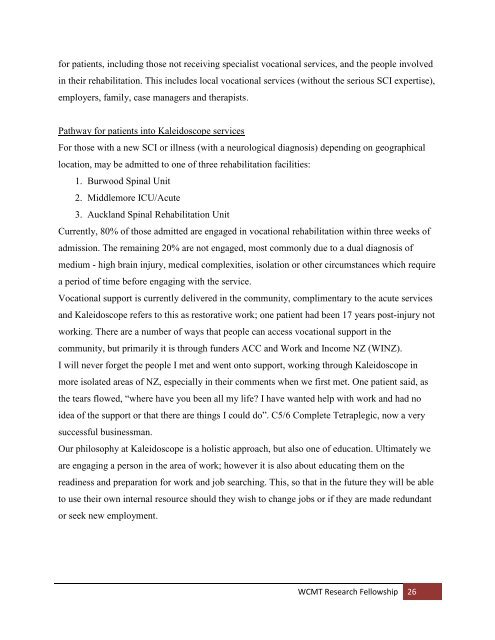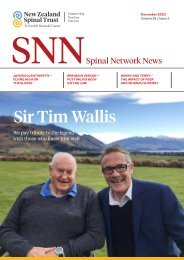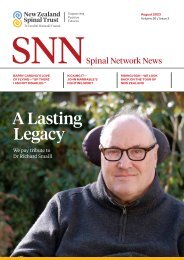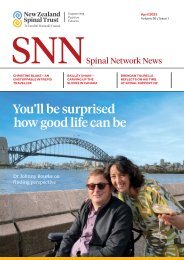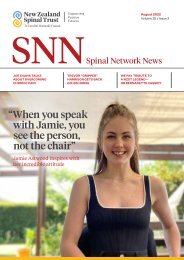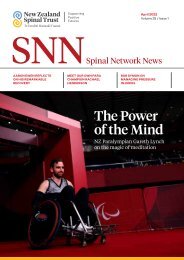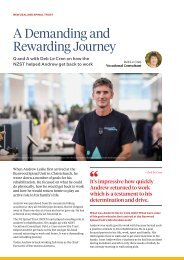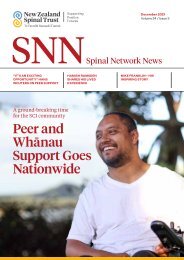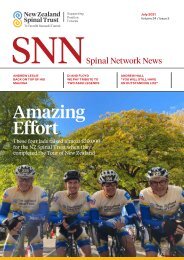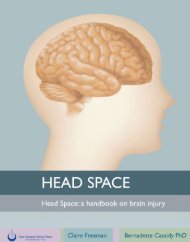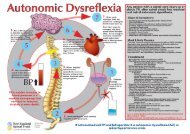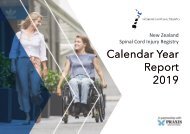WCMT-Melissa-Kelly
You also want an ePaper? Increase the reach of your titles
YUMPU automatically turns print PDFs into web optimized ePapers that Google loves.
for patients, including those not receiving specialist vocational services, and the people involved<br />
in their rehabilitation. This includes local vocational services (without the serious SCI expertise),<br />
employers, family, case managers and therapists.<br />
Pathway for patients into Kaleidoscope services<br />
For those with a new SCI or illness (with a neurological diagnosis) depending on geographical<br />
location, may be admitted to one of three rehabilitation facilities:<br />
1. Burwood Spinal Unit<br />
2. Middlemore ICU/Acute<br />
3. Auckland Spinal Rehabilitation Unit<br />
Currently, 80% of those admitted are engaged in vocational rehabilitation within three weeks of<br />
admission. The remaining 20% are not engaged, most commonly due to a dual diagnosis of<br />
medium - high brain injury, medical complexities, isolation or other circumstances which require<br />
a period of time before engaging with the service.<br />
Vocational support is currently delivered in the community, complimentary to the acute services<br />
and Kaleidoscope refers to this as restorative work; one patient had been 17 years post-injury not<br />
working. There are a number of ways that people can access vocational support in the<br />
community, but primarily it is through funders ACC and Work and Income NZ (WINZ).<br />
I will never forget the people I met and went onto support, working through Kaleidoscope in<br />
more isolated areas of NZ, especially in their comments when we first met. One patient said, as<br />
the tears flowed, “where have you been all my life? I have wanted help with work and had no<br />
idea of the support or that there are things I could do”. C5/6 Complete Tetraplegic, now a very<br />
successful businessman.<br />
Our philosophy at Kaleidoscope is a holistic approach, but also one of education. Ultimately we<br />
are engaging a person in the area of work; however it is also about educating them on the<br />
readiness and preparation for work and job searching. This, so that in the future they will be able<br />
to use their own internal resource should they wish to change jobs or if they are made redundant<br />
or seek new employment.<br />
<strong>WCMT</strong> Research Fellowship 26


